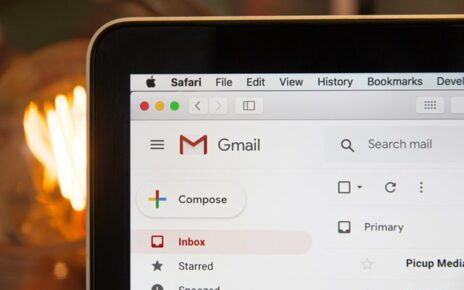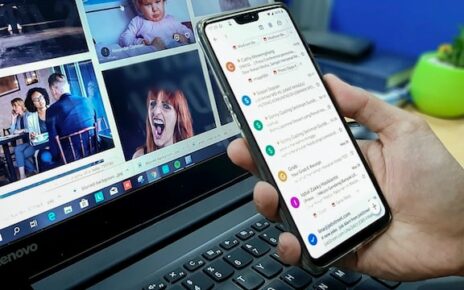Personalize your email marketing campaigns to foster a closer bond with customers and increase the clickthrough rate. Keep reading to find out more!
As more and more businesses are turning to emails as a marketing tool, people may end up with tens of emails per day. With such an overwhelming number of messages, there is no guarantee that receivers would open everything they get. Therefore, it is essential to ensure your commercial emails stand out compared to other rivals and actually appeal to the customers.
This is when email personalization steps in and adds a unique charm to your campaigns. For those who still struggle to design an email layout that resonates with the receiving end, the guidelines below are a must-read!
What Is Email Personalization?
As the name already indicates, this procedure aims at creating emails that target a specific buyer instead of the entire audience. By making emails relatable, businesses stand a higher chance of reinforcing the image and awareness and boosting the clickthrough rate.
Research has also shown that deeply personalized emails tend to make shoppers feel valued and appreciated, thus extracting more high-intent searches and clicks in the future.
How To Personalize Commercial Emails (5 Brilliant Ideas)
1. Include the name of the customer
Any psychologist would emphasize the importance of a name and how people grow attached to what they are called. Thus, addressing customers with their names in your emails is an essential step. Not only does it lower the defensiveness of the recipient upon confronting something unfamiliar, but it also shows that your brand cares about each individual and is willing to satisfy their needs.
Still, repeating the name too many times can backfire and blanket your email with awkwardness. So instead, try to put the name in twice, one at the beginning of the text and another right before the ending. This way, customers will not feel like they are being cornered.
Another thing to take into consideration with using names is the subject line. Sometimes, inserting the customer’s name in the email title can grab their attention right away. For example, an email entitled “Hey Drake! Have you checked out our latest promotion codes?” sounds friendlier than simply stating, “Check out our promotion codes today!”
2. Layer the customers
Instead of sending emails to a pool of customers without considering their personas, why not segment them into smaller groups and design different personalization templates? The process is less time-consuming for digital marketers, and if done right, it can significantly boost your clickthrough rate.
So how can you start segmenting the customer list? It all goes back to the lead form submission when potential shoppers offer their personal information to update your service.
Stay away from simply asking for their email addresses. You can go further and require details regarding their age, gender, hobbies and interests, geographical location, past searches, level of interest in products, etc. From there, put people with at least one thing in common together, and start drafting an email that strikes a chord with them.
Still, it should be noted that many people are reluctant to give away too much data, especially if they are new to your services. If it is the case, do not try to pressure them. Instead, ratchet things up by asking them for their contacts first, and require more information later, when they already grow accustomed to your business.
3. Send the emails at the right time
Some people prefer checking their inbox first thing in the morning, while others delay it until late at night. Capturing the habit of customers increases the chance of your emails getting opened, thus effectively eliciting reactions from recipients.
To best measure when customers are most likely to check it up, ask a Google Ads agency for advice on performing A/B testing. Experimenting with multiple time frames helps you compare and contrast before deciding on a sufficient moment for email sending.
Apart from this, it is also worth noting to keep your emails at a consistent pace. For example, if you usually send out emails every two weeks on Friday, stick to the frequency. The purpose behind this action is to make buyers become used to receiving reminders and updates from your website at a fixed rate.
4. Write ad copy based on customer behaviors
The latest action taken by a user is called behavior triggers, which reaches out to the most potential customers and asks them for reengagements. You can forward these messages to existing contacts or those interested in your products but have yet to seal the deal. Depending on each target audience, prepare the content that closely ties with their needs.
- New customers: When approaching people unaware of what your brand offers, take it slow by presenting them with insights into your company. Next up, give them free tutorials on what they care about, and add a special bonus for first-timers.
- One-time customers: Convincing these people to repeat their order is trickier but not impossible. Most shoppers enjoy more tips and tricks to best utilize their purchase, which you can provide by leading them back to your website.
- Loyal customers: An exclusive promotion code once in a while is the first step to keep your fan satisfied. If possible, keep track of their past activity and present them in a report. Many shopping platforms allow users to look through their buying history, which fascinates a lot of shopaholics.
5. Contact customers on special occasions
Suppose you intend on getting to know shoppers in the most intimate way possible. Why not reach out to them on their birthdays or other anniversaries? Not only does it offer a pleasant surprise for the receiving end, but it also improves your brand’s image.
Conclusion
Mastering the art of email personalization is not easy. But with enough time and effort invested in the process, soon you will grasp the ins and outs of this effective technique. If you find the advice above useful, feel free to bookmark it for later use!



